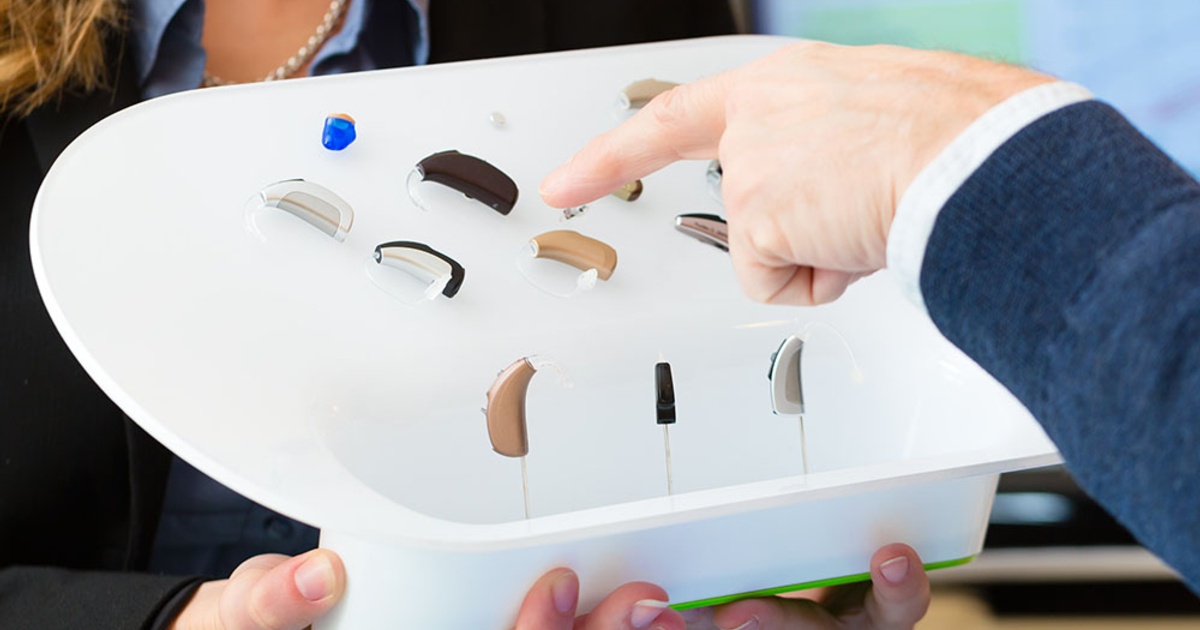A Brief Summary
In 2017, a law was passed that directed the FDA to create a new category of hearing aids, known as Over-the-counter (OTC) hearing aids, for people 18 and older. In October 2021, they proposed rules for the new OTC hearing aids and finalized this process this month, with OTC hearing aids set to hit retail shelves in October 2022. In this article, we’ll discuss what OTC hearing aids are and how they differ from other products such as prescription hearing aids and PSAPs (personal sound amplification product). We’ll also discuss why this is important to the average consumer.

What are OTC hearing aids?
Up until now, you could only get a hearing aid by visiting a hearing health professional and getting tested and fitted for a pair. With OTC hearing aids, you would be able to go to any pharmacy or other store that sells medical devices and purchase a hearing aid without having to go to an audiologist or doctor for a prescription beforehand. These devices can be adjusted by the customer at home and are meant for adults who believe they have mild to moderate hearing loss.
OTCs are considered Class I Medical Devices by the FDA and are subject to a rigorous process and requirements in order to be sold. This ensures that customers are receiving an effective and safe product, compared to products may not have FDA clearance and can potentially harm customers and cause more damage to their hearing.
Additionally, the FDA has recently amended some of their requirements for OTC Hearing Aids following the approval this month, mentioning changes such as:
- Lowering the output limit for OTC hearing aids to make sure customers don’t damage their hearing
- Requiring all OTC hearing aids to have controls to adjust the hearing aid on the device itself
- Setting a minimum safe distance that the hearing aid can be from the eardrum
How are OTC hearing aids different from prescription aids or PSAPs?
As mentioned previously, OTC hearing aids will be available for purchase at any pharmacy or medical device store without the need for a prescription. This means that customers do not have to visit a hearing health professional beforehand in order to buy one. However, personal sound amplification products (or PSAPs) can also be bought without any prescription and can be purchased just about anywhere they are sold and not limited to places such as pharmacies. The prices are much more affordable compared to prescription hearing aids and are expected to save customers roughly $2,876 a pair.
However, unlike OTC and prescription hearing aids, PSAPs are not designed or intended to treat any kind of hearing loss. Their main use is to help enhance hearing in individuals who have normal hearing. Some examples of PSAPs include devices that let people hear distant sounds much louder, devices that hunters can use to enhance the sounds of their prey, and devices that block out or reduce noise on trains or airplanes. While PSAPs may amplify sounds, they do nothing for other issues of hearing loss, such as distorted or muffled sounds. They are much cheaper in comparison to OTC and prescription hearing aids, usually less than $100.
Prescription hearing aids are the most expensive and time-consuming of the three, but offer aids for many conditions and can be tuned by a professional in order to match your hearing needs as closely as possible. They can also come in different styles, such as bone conduction hearing aids as well as air conduction hearing aids. They are also approved for treatment of hearing loss that is more severe or even profound. OTC hearing aids can only be used to treat mild to moderate hearing loss. For people with worse hearing loss, they would still need to go to an audiologist for evaluation and treatment.

Why is it important to have OTC hearing aids?
Currently, roughly 48 million Americans have some level of hearing loss, but only 1 in 5 people who need hearing aids actually use them. The main barrier to entry would be cost. On average, the cost for a single hearing aid can be $2,000. This may not even include other expenses, such as the appointments with audiologists and any other fees, such as service or maintenance. For many older Americans, this is an expense that they cannot make room for. OTC hearing aids would make it much more affordable for people and give them the help that they need. Besides affordability, there is also the issue of availability. Some people have either a limited range of hearing aids to choose from or have to wait years to be able to receive their prescription hearing aids. OTC hearing aids would open up the market and allow for new designs that were previously unavailable. They would also be available to buy immediately and you would not have to rely on insurance approving your purchase or a company to take the time to make the hearing aids for you.
If you are in need of hearing assistance or know a loved one who struggles with hearing problems, Neosonic products may help. Our products are designed for mild to moderate hearing loss and help with high frequency hearing loss, age-related or otherwise. Our aids are FDA Registered and Cleared and also follow the guidelines set for OTC hearing aids.
We understand that hearing loss can deeply affect your quality of life as well as your relationships with friends and family. We also know that hearing aids can be very expensive and that not everyone can afford the steep prices that some of these hearing companies charge. This is why we offer our products at much more affordable prices. We do this by cutting out the middle man and passing the savings on to you. If you’re interested, you can always reach out to us and we’ll do our best to help you pick a product that works for you.
